Introduction
Nurse practitioner entrepreneurshipbusiness model:
- Concept Statement.
- Marketing Plan.
- Product Development.
- Finance and Accounting.
- Legal Considerations.
In this presentation, the details of an entrepreneurship business model for adult day care services will be discussed. A good business plan plays a crucial role in financing and preparing for various expected tasks. At the same time, it is a reliable road map for individuals to meet their organizational and managerial goals. There are five main elements in the plan, including:
- The creation of a concept statement with the reasons and benefits of the chosen type of care and a business plan;
- The organization of a marketing plan with target market penetration and the most effective strategy;
- Product development with all possible risks;
- Finance and Accounting implications with resources, funding, and expenses;
- Legal considerations with a business team and the description of such issues as protocols and certifications.
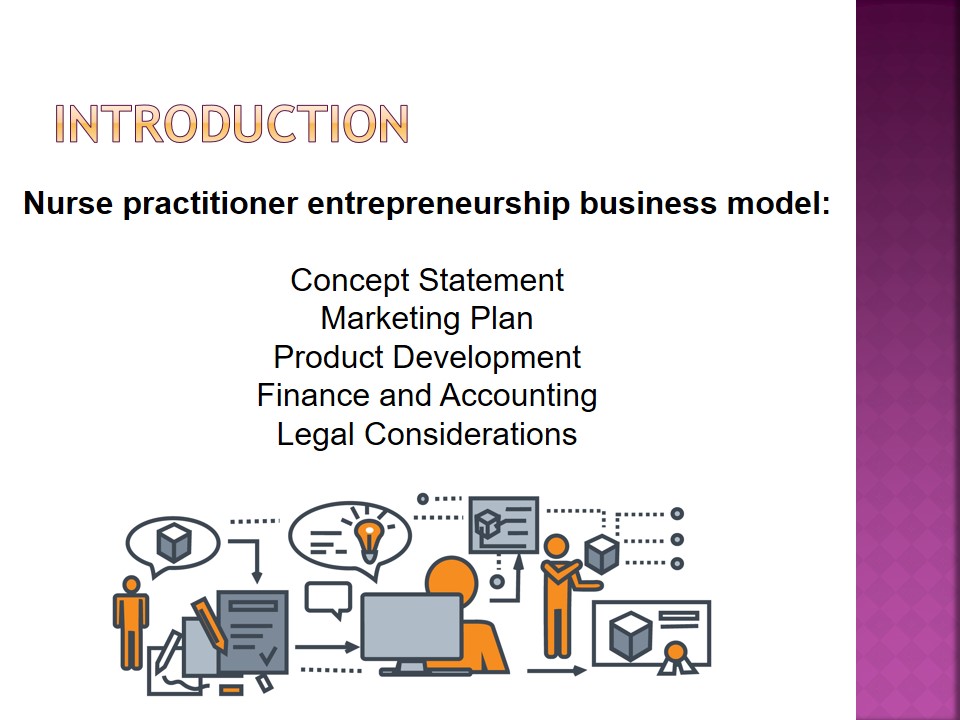
Adult Care Basics
- Sustain people’s health, nutritional, and daily living needs.
- Promote functional independence.
- Improve the quality of life.
- Support families with older adults.
- Provide screening, physical therapies, and medication management.
- Educate and consult.
Adult day care aims at sustaining people’s health, nutritional needs, and daily living standards. The main characteristic of this type of care is that it is offered out-of-home to enhance functional independence among adults and older people and improve the quality of life (Gaugler, 2014). The reasons why adults are in need of day care vary, including chronic conditions, traumas, or mental health disorders that limit their physical and thinking abilities. Adult care centers are created to support families with older or disabled adults by providing education, counseling, screening, and physical therapies (“Adult day care,” n.d.). Socialization and medication management are also included in the list of services.
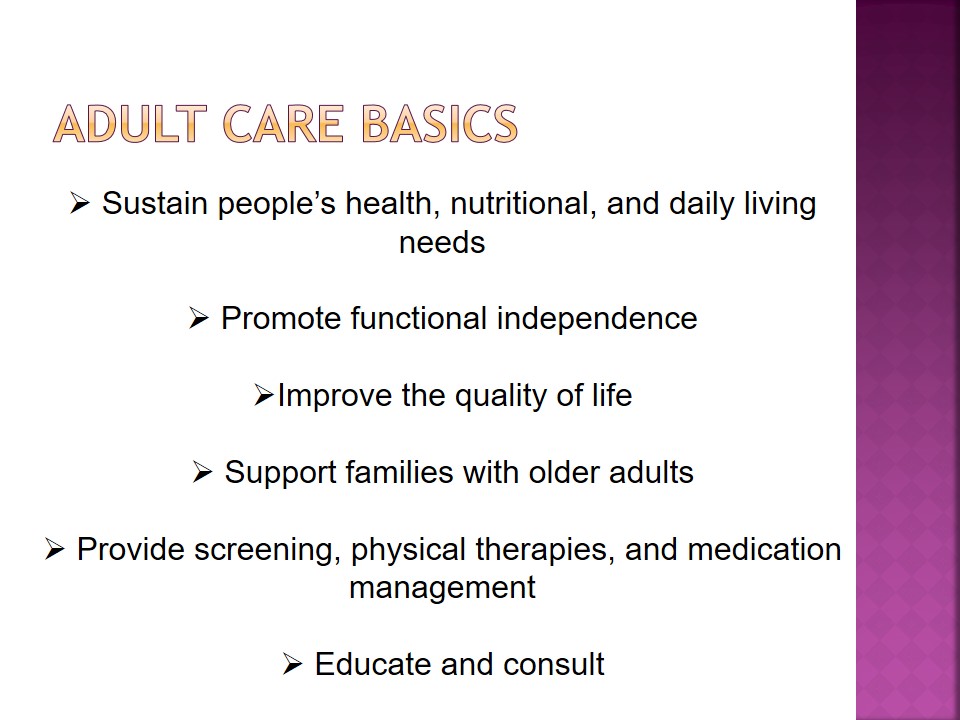
Concept Statement: Idea and Reasons
Idea: Professional health care to older adults and relief to family members
Reasons:
- Companionship for older adults.
- High-quality medical and healthcare management.
- Education and communication.
- Social and moral support.
A team of nurse practitioner entrepreneurs suggests developing an adult day care center the idea of which is to promote professional health care to older adults and enhance relief to their family members. The core goal is rather simple: to create an organization for adult people in need to meet their physiological and psychological needs. The reasons for selecting this area are closely connected to the general plan. Today, more than 12 million Americans are in need of long-term day care, and 63% are people under 65 years (Family Caregiver Alliance, 2015). Therefore, it is expected to offer credible help to this group of people and focus on companionship for older adults, management of health care and medication treatment, education, communication, and social or moral support for adults and their families.
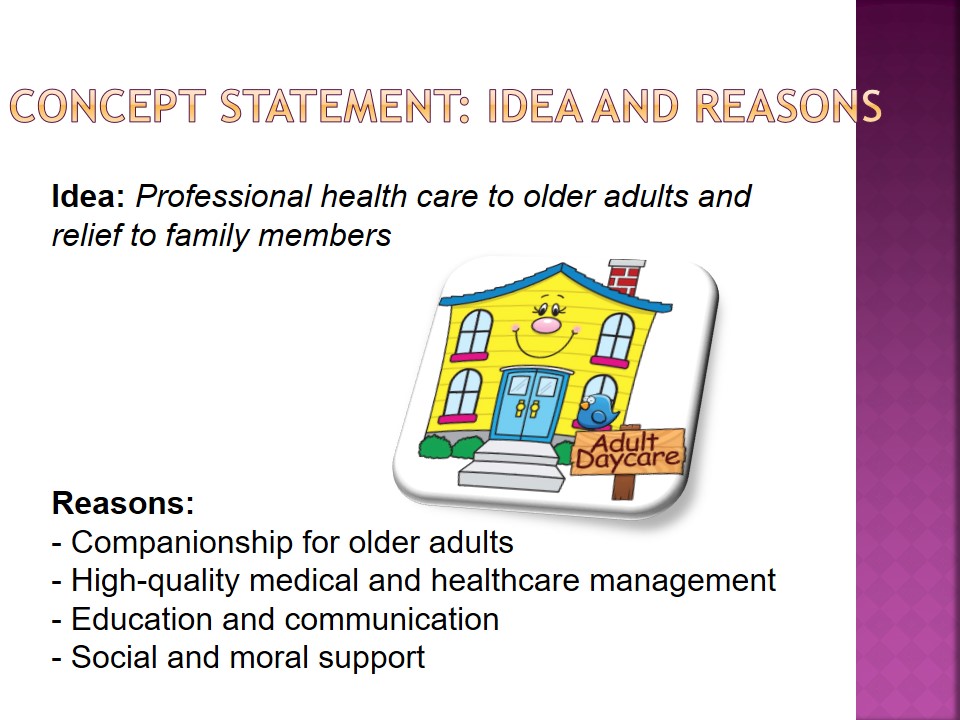
Concept Statement: Benefits
- For families (caregivers):
- Regular control of adults and their health;
- Stress and anxiety reduction;
- Improved quality of life;
- For patients:
- Safety and comfort anytime;
- Improvement of social and cognitive functions;
- Independence and social interactions.
There are many benefits to prove the necessity of the adult day care center that directly influence patients, as well as their families and caregivers. On the one hand, families who have older adults need to spend much time controlling their health, mental or emotional changes, and medication intake. They have to sacrifice their jobs and freedoms to make sure their older relatives are fine. This center is a chance for families to share certain responsibilities with healthcare experts and ensure regular control of adults and their health, reduce stressful situations, and improve the quality of life (to work, entertain, and relax). On the other hand, many older adults want to have some guarantees from healthcare workers, and this center is the place where safety, comfort, functional improvement, independence, and social interactions are promoted.
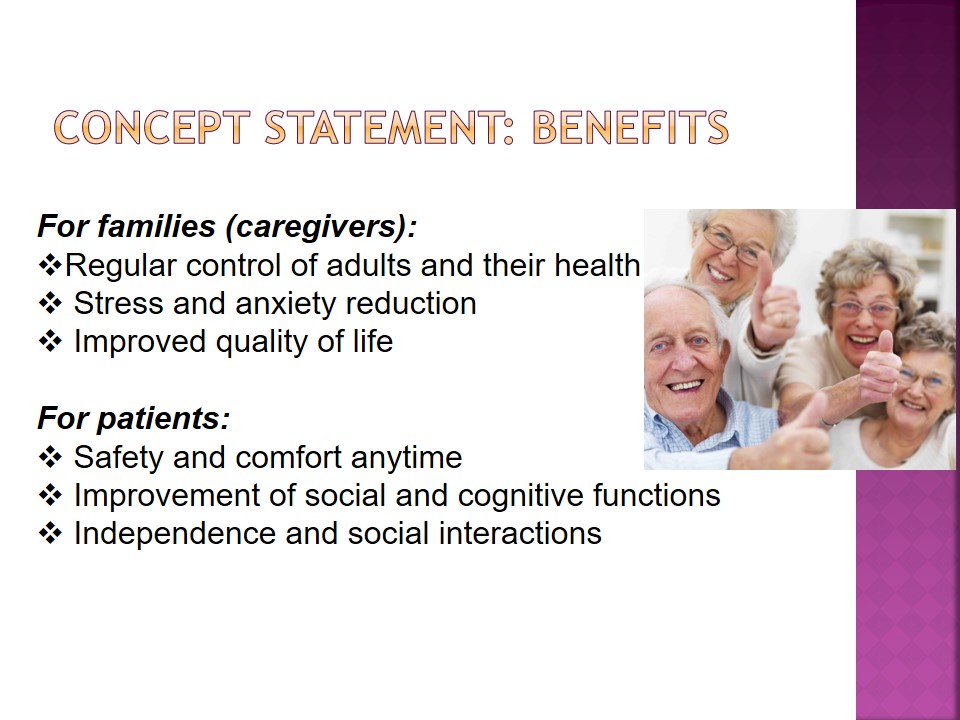
Marketing Plan: Target Market
- Target Market:
- Older adults (65 years and more);
- Families with older adults;
- Healthcare providers:
- Nurses;
- Therapists;
- Psychologists.
- Penetration:
- Personal communication;
- Home visits;
- Observations;
- Sales under specific conditions.
Adult care centers can be interesting to a variety of people who are aware of the needs of older people, want to contribute to the field of senior health, or investigate the methods of family health improvement. In this marketing plan, the target market includes:
- Older adults: males and females older than 65 years should be interested in receiving the best care and staying independent from their families;
- Families with older adults: family members and caregivers of any age can find these services helpful to fulfill their personal and professional life goals;
- Healthcare providers (i.e., nurses, therapists, and psychologists): experienced and novice employees may find a new job within this center.
Penetration to this target market occurs in several ways:
- Communication with potential customers to reveal opportunities;
- Home visits to identify adults’ needs and expectations;
- Observations to offer the necessary services;
- Sales for first-month services to attract attention.
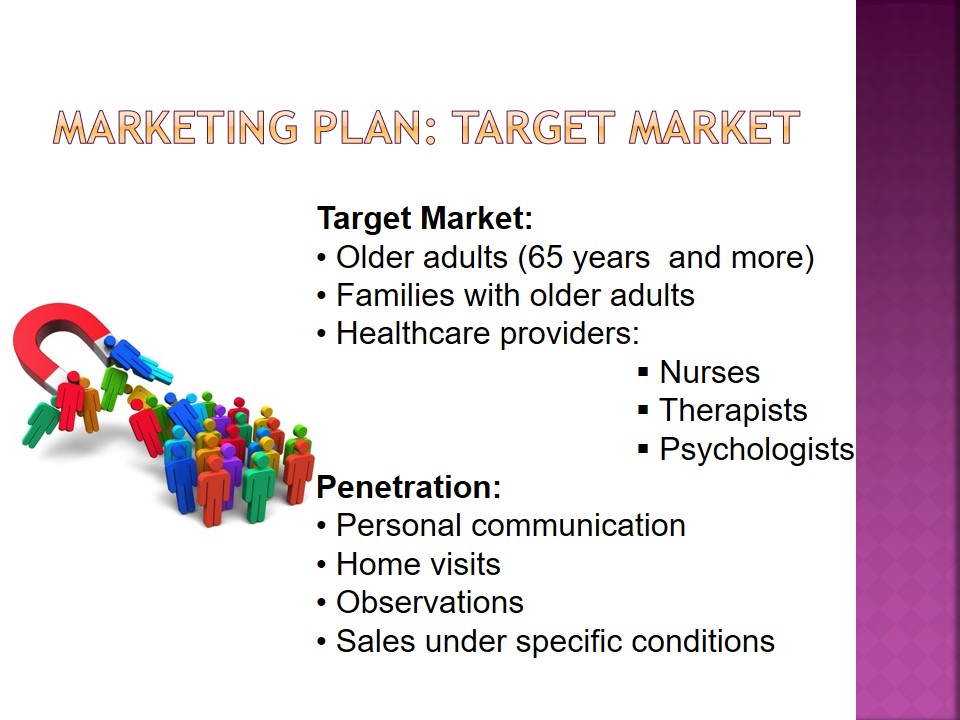
Marketing Plan: Strategy
- Brief but informative;
- Within real settings;
- Directly addressed to people;
- Supported with visuals;
- Calm background music.
A TV ad is chosen as the main marketing strategy to inform people about a new adult day care center in their region. Despite the fact that many non-TV options like Facebook, YouTube, or smartphone technologies are available to modern people, Americans still spend more than seven hours per day watching TV (Madrigal, 2018). Therefore, a TV-based approach seems to be relevant to connect with potential clients. The ad has to be short but informative, within real settings, and addresses directly the target population so older adults and their families may notice an offer. Interesting visuals and calm background music will be effective improvements within the ad.
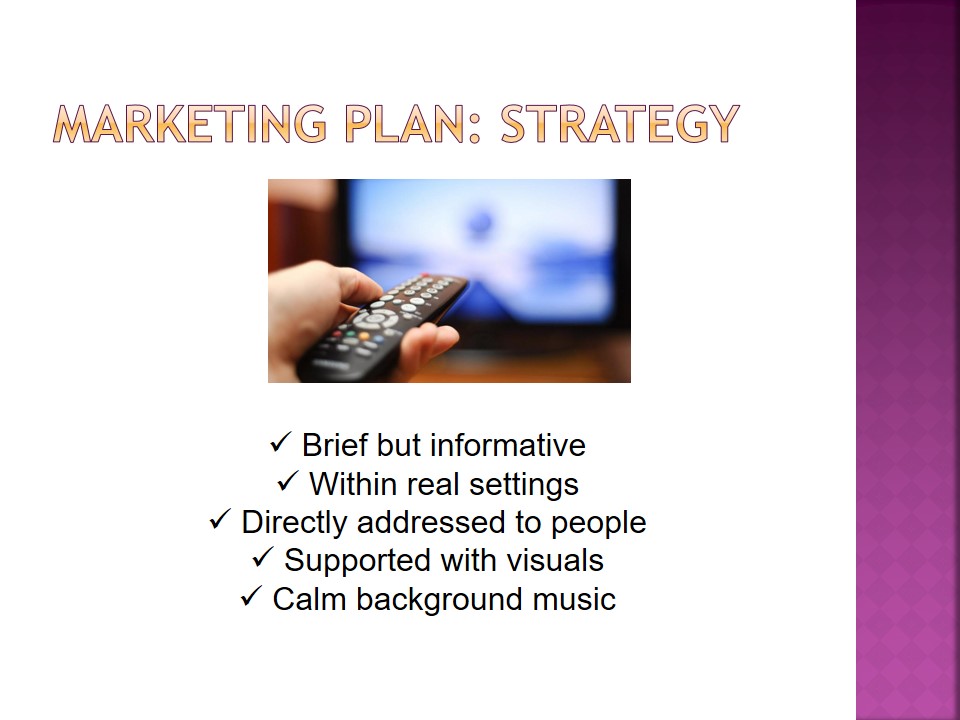
Development of the Service
- A professional team of employees;
- Credible stakeholders;
- Operating licenses and insurance;
- Successfully passed inspections;
- Research and regular training.
The development of the service to be offered to older adults on a daily basis should begin with the choice of a professional team. Senior day caregiving includes social, recreational, and health-related activities that have to be provided by experts (Siegler, Lama, Knight, Laureano, & Reid, 2015). However, their help should be financially supported, and the search for credible stakeholders cannot be ignored. To meet national standards and legal considerations, appropriate licenses, insurance, and inspections must be obtained. The final stage of this service development is the promotion of sustainable research and training for the staff.
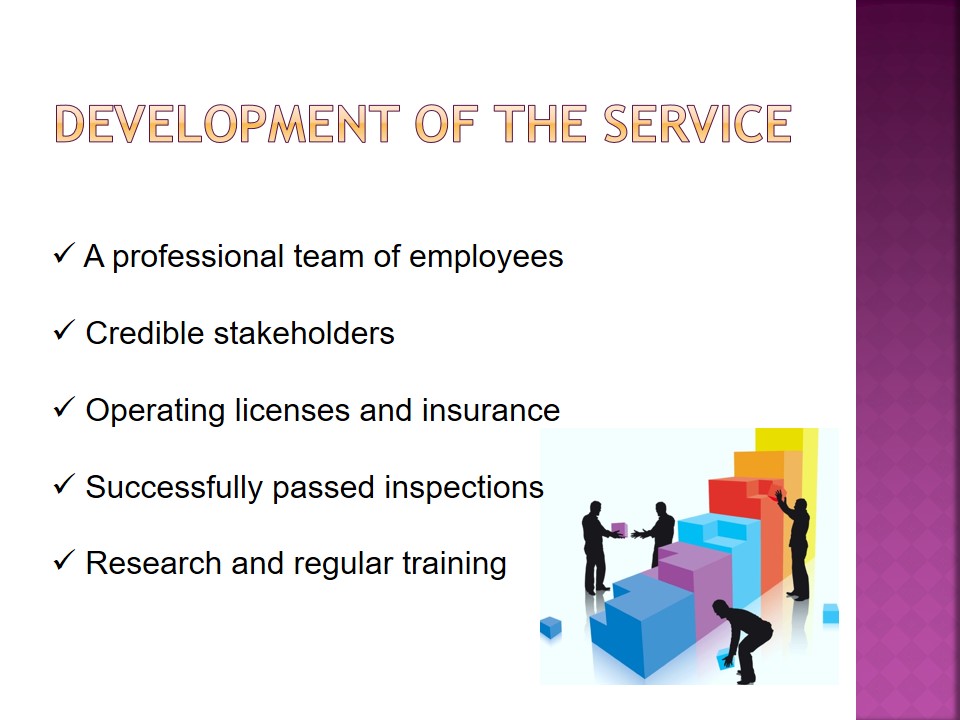
Development Risks
- Operational Risks:
- Human resource problems;
- Weak leadership;
- Strategic Risks:
- Regional competitors;
- The lack of customers;
- Financial Risks:
- Poorly calculated prices;
- Inflation or financial markets’ changes.
There are three types of risks in service development: operational, strategic, and financial. Operational risks include the impossibility to predict all human resource problems like the hiring of the necessary number of people, cooperation, and the establishment of clear goals. Weak leadership is another pitfall that cannot be neglected if a person fails to unite the team and coordinate them properly. Strategic risks may occur because of the presence of regional competitors or the inability to find enough clients in a short period of time. Financial risks also play a crucial role: if prices are poorly calculated or inflation occurs, even the most professional healthcare providers cannot cope with unpredictable outcomes.
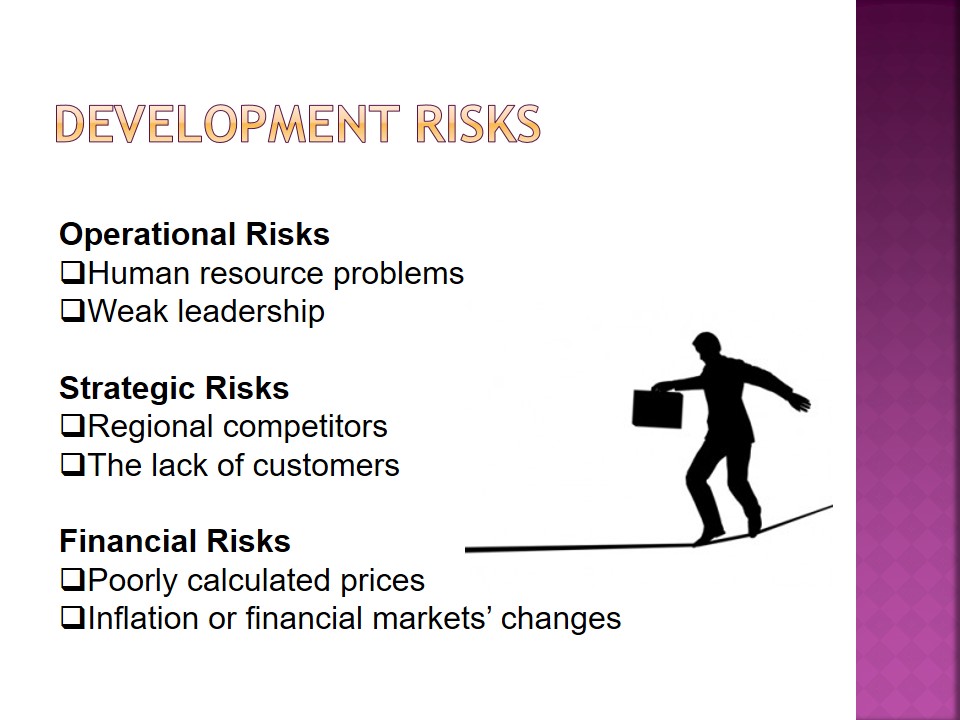
Finance & Accounting: Implications
- Service price for one patient:
- $50 per day;
- $1,000 per month (8 hours/5 days/1 week);
- $12,000 per year;
- Total costs for an organization:
- $150,000 for the first six months:
- facility;
- food;
- transportation;
- HR costs.
- $150,000 for the first six months:
Nationwide statistics will be used to identify major financial expectations and implications in this business project. First, costs for adult care for patients should be calculated (“Adult day care costs,’ n.d.). It is expected for an individual to spend $50 on care per day, $1,000 per month, and $12,000 per year regarding five visits per week during 8 hours (without medication costs). Second, the costs of a center must be predicted in order to comprehend the number of stakeholders. $150,000 is required for the staff to take the initial steps and implement services, including food, facility, transportation, and HR costs within the first six months. If about 100 patients are found during the first year, certain incomes can be observed.
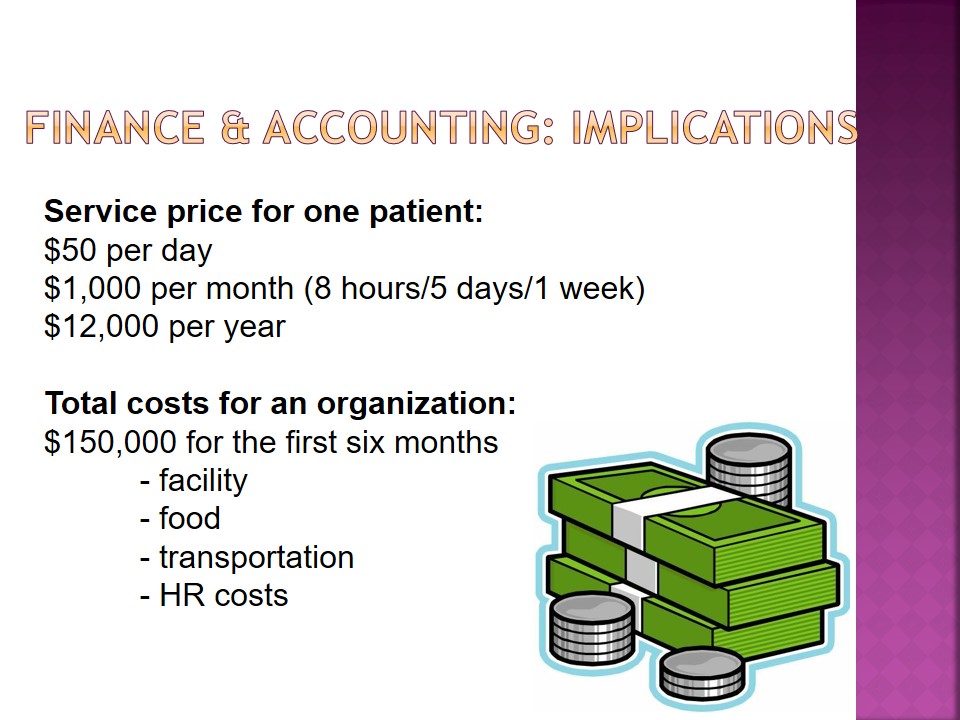
Finance & Accounting: Resources
- Personal funding.
- Personal sponsorship.
- Government sponsorship.
- Bank loan.
- Crowdfunding.
To successfully create a business plan, several resources with financial support should be found:
- Personal funding is usually planned beforehand and includes the contributions of the team to the project;
- Personal sponsorship includes the possibility to find one investor and use his or her money for the project (nowadays, it is fashionable to become a volunteer sponsor)
- Government sponsorship can be possible if all the papers, inspections, and licensed can be presented along with a plan of work and a safe financial history (an approval can take much time or be negative);
- Banks give loans for people with good credit histories, but a number of peculiarities and expenses are included;
- Crowdfunding is a modern method to raise capital on the basis of collective efforts of a team via social media.
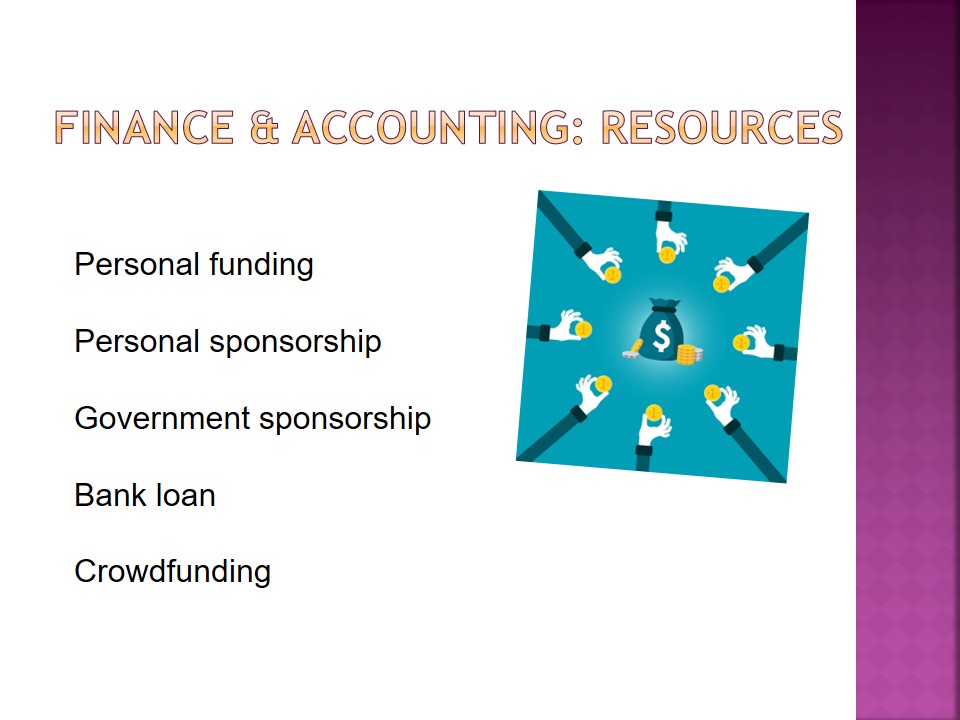
Finance & Accounting: Expenses
The financial section of the business plan is based on three statements – income, cash flow, and a balance sheet. Income statement turns out to be the initial step in analyzing the financial situation of the project. It should help to predict the expenses and profits of services and identify the income that can be expected.
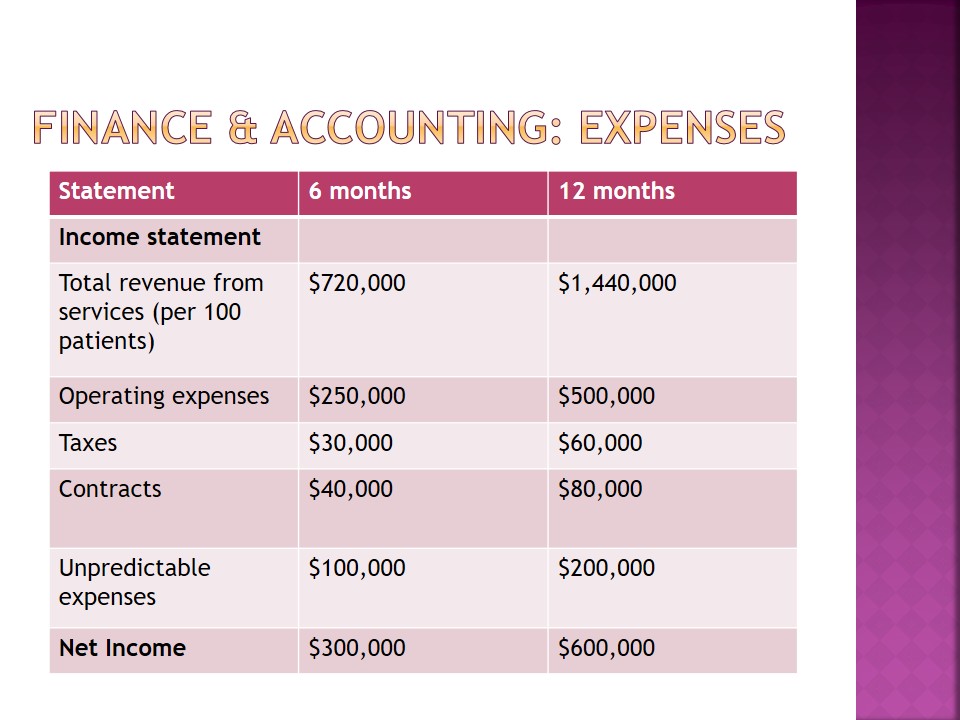
Legal Considerations
- The Medicare Adult Day Services Act of 2017.
- The Health Insurance Portability and Accountability Act.
- The Social Security Act.
From a general point of view, an adult day care business should meet the requirements of the three major laws applied to the American healthcare system:
- The Medicare Adult Day Services Act of 2017 (the identification of services that have to be provided by older patients by licensed care facilities, including such food, transportation, and physical activities);
- The Health Insurance Portability and Accountability Act (control and differentiation of healthcare information, as well as the protection of health insurance coverage for adult workers and their families);
- The Social Security Act (a system of benefits for old-age people, including workers, unemployed adults, dependent mothers and children, and physically disabled patients).
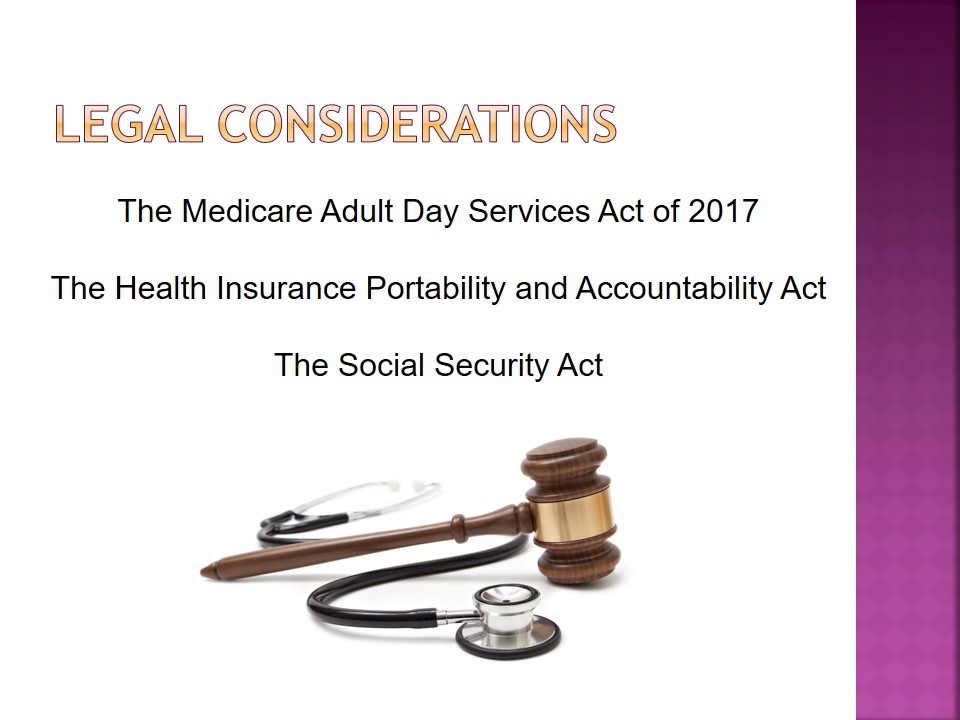
Legal Business Details
- Licensure.
- Certification.
- Other arrangements (contracts, programs, agreements, or provider manuals).
Legal considerations for the creation of an appropriate adult day care business cannot be ignored in this project. In the majority of states, it is expected for medical centers or similar facilities to have the staff who are licensed or certified. Licensure is required in 25 states of America, certification is an obligation in ten states, and four states expect healthcare experts have both, a license and a certification (“Section 1. Overview of adult day services regulations,” n.d.). In 13 states, including those where one standard has already been chosen, other forms of arrangement may be needed. Local regulations vary in the states, and it is better to contact a local governmental body and ask for all the necessary regulations and requirements.

Conclusion
- Adult day care business helps older patients improve the quality of life and receive adequate care.
- Families can relax and be confident that their relatives are under control and thorough examination.
- As soon as a client database meets its limits, incomes can be observed.
- Legal approval like license or certification is required.
There are many reasons for creating an adult day care center, but the most crucial ones are the intentions to help older patients improve their living standards and get access to high-quality health care on a regular basis. Families can benefit from such a center because it is a good opportunity to provide their adults with the best services and care when they are busy with their jobs, personal affairs, and other real-life demands. The offered marketing plan with its income statements and target market will work as soon as a legal approval in the form of licenses or certifications can be applied.
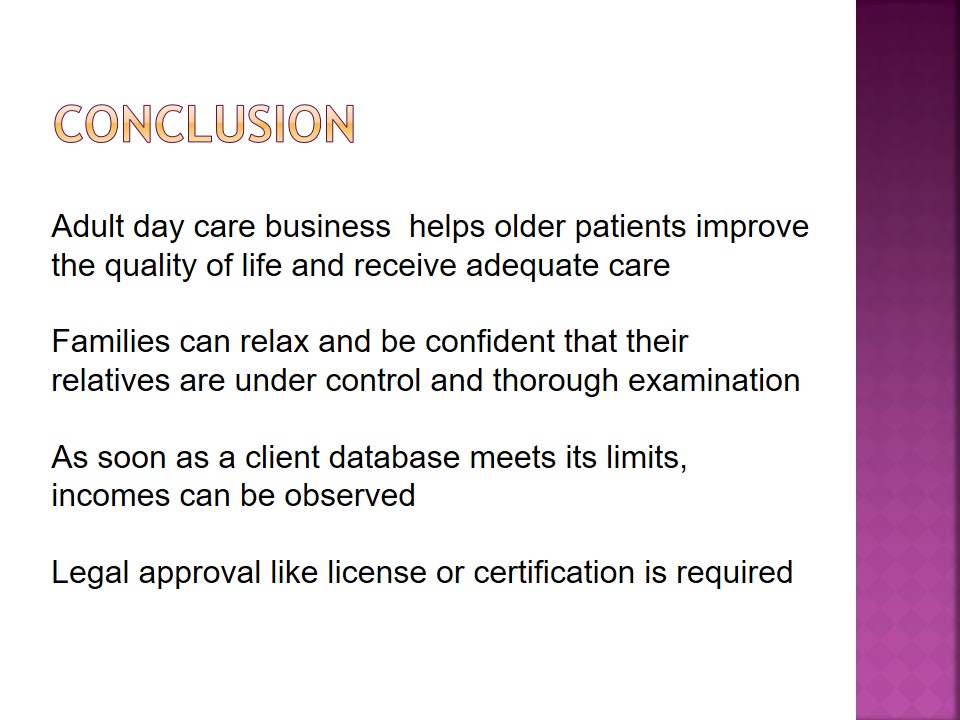
References
Adult day care. (n.d.). Web.
Adult day care costs. (n.d.). Web.
Family Caregiver Alliance. (2015). Selected long-term care statistics. Web.
Gaugler, J. E. (2014). The process of adult day service use. Geriatric Nursing, 35(1), 47-54.
Madrigal, A. C. (2018). When did TV watching peak?The Atlantic. Web.
Section 1. Overview of adult day services regulations. (n.d.). Web.
Siegler, E. L., Lama, S. D., Knight, M. G., Laureano, E., & Reid, M. C. (2015). Community-based supports and services for older adults: A primer for clinicians. Journal of Geriatrics, 2015. Web.